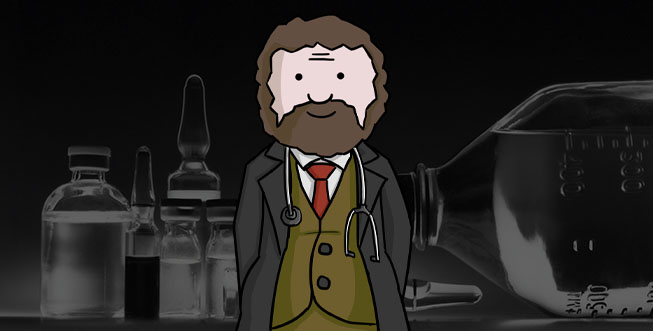Pain and infection remained a major problem for surgery. During the 19th century there were key developments in these areas. Simpson proved how chloroform could help with pain relief, whilst Lister used Pasteur’s germ theory to realise that spraying carbolic spray on surgical instruments killed germs. This is known as antiseptic surgery.
Aseptic surgery also gained popularity during the late 1800’s. This meant keeping everything clean and clear of germs prior to and during surgery. Aseptic surgery reduced the need for carbolic spray as operating instruments and staff clothing was carefully sterilised. William Halsted invented surgical gloves in 1889. Now, all operating staff wear sterilised gowns, gloves and masks to reduce the risk of germs.
Factors
Science and Technology
Developments such as the microscope helped doctors to understand how diseases spread. Pasteur’s germ theory led Lister to realise that germs on equipment, hands, etc. could cause infection so used carbolic spray to kill germs.
Communication
Around the world people began to experiment and share their findings through lectures and print. Doctors such as Lister and Simpson were able to share their findings around the use of antiseptics and anaesthetics. News that Queen Victoria gave birth to her eighth baby using chloroform meant that it was more widely used during childbirth to reduce pain.



